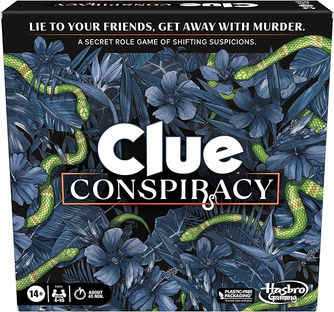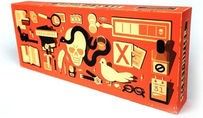Official Clue Conspiracy Board Game Rules
This post contains affiliate links. For more information, see our disclosures here.
Objective
The objective of Clue: Conspiracy is to be the first player to correctly identify the murderer, the weapon, and the location of the crime.
Components
Game board depicting various rooms and locations
Character pawns representing suspects
Weapon tokens
Room cards
Intrigue cards
Clue sheets
Dice
Rulebook
Setup
Prepare the Board: Set up the game board in the center of the playing area.
Select Suspects: Each player selects a character pawn to represent their detective.
Distribute Weapons: Place the weapon tokens in the designated rooms on the board.
Shuffle Decks: Shuffle the room cards and intrigue cards separately and place them face down within easy reach of all players.
Determine Starting Player: Decide who goes first by any agreed-upon method.
Gameplay
Take Turns: Players take turns moving their character pawns around the board and making deductions.
Move Characters: On their turn, a player rolls the dice and moves their character pawn a number of spaces equal to the roll.
Enter Rooms: When a player's character pawn enters a room, they may make a suggestion about the murder.
The player suggests a suspect, a weapon, and the room they are in.
Other players must disprove the suggestion by showing a card from their hand that matches one of the elements of the suggestion.
Make Accusations: Instead of making a suggestion, a player may choose to make an accusation about the murder.
The player secretly writes down their accusation of the suspect, weapon, and room.
If correct, the player wins the game. If incorrect, the player is eliminated from the game.
Use Intrigue Cards: Players can use intrigue cards to gain advantages or hinder their opponents' progress.
Collect Clues: Throughout the game, players collect clues by disproving suggestions made by other players.
Eliminate Possibilities: Through deductive reasoning, players narrow down the possibilities until they can make an accurate accusation.
Winning the Game
The game ends when a player correctly accuses the murderer, the weapon, and the location of the crime. That player wins the game.
Additional Rules
Clue Sheets: Players may use clue sheets to keep track of information and eliminate possibilities.
Strategy and Deduction: Successful players will use deductive reasoning and strategic thinking to solve the mystery.
Player Interaction: Interaction between players is a key aspect of the game, with suggestions, accusations, and intrigue cards playing important roles.
Variant Rules: Different versions of Clue: Conspiracy may have variant rules or additional gameplay elements.
Clue: Conspiracy offers a modern and engaging twist on the classic deduction game, allowing players to immerse themselves in the mystery of solving a murder. With its thematic gameplay and interactive mechanics, it provides hours of entertainment for players of all ages.

























